 Scroll Down to see all of this week’s updates
Scroll Down to see all of this week’s updates
Government Tightens Foreign Pilot Rules
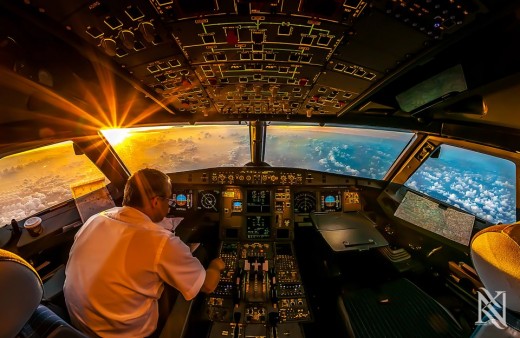
Aviation companies will no longer be able to require specific type ratings in job postings for new pilots as part of the government’s tightening of rules for hiring temporary foreign workers.
As we reported a few weeks ago, there were allegations that some aviation companies were using the temporary foreign worker program to hire fully trained pilots from elsewhere rather than train up and coming new pilots.
Employment Minister Jason Kenney apparently agreed that the type rating was an artificial barrier in the justification some companies used in asking for permission to hire non-Canadian pilots. The most common justification is that there is a lack of qualified applicants.
“There was a consensus that there is no shortage of Canadian commercial pilots who could be trained to fly specific types of aircraft,” the briefing note accompanying the minister’s announcement said.
If a company does manage to justify hiring foreign pilots, it must also outline a plan to reduce its dependence on foreign pilots and hire more Canadians.
Friday’s announcement also put a spotlight on the Royal Canadian Air Force’s increasing reliance on foreign pilots across a broad spectrum of operational and training roles. The Air Force has hired 24 former foreign military pilots since 2012 and the military says it’s because there aren’t enough Canadian pilots in its own training pipeline. Nineteen of the 24 came from the U.K.’s Royal Air Force.
It’s not clear if the government’s new rules will affect the RCAF’s ability to hire foreign pilots.
Mosquito Flies At Victoria Airport
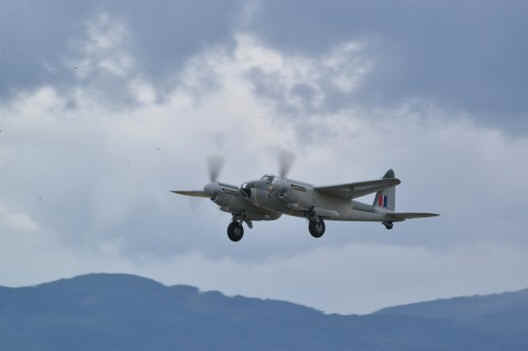
The world’s second flying De Havilland Mosquito took off from Victoria Airport June 16 after a painstaking restoration at Victoria Air Maintenance.
The first flight was a short one. A landing gear issue prompted a quick return to the field but a second flight later in the week was longer. Reno Air Races pilot Steve Hinton was at the controls.
The Mosquito is owned by Bob Jens, the publicity-shy owner of the Million Air FBO at Vancouver International Airport. He hasn’t discussed the aircraft’s future but the speculation is that the aircraft will be housed in a private museum and not be publicly displayed or flown.
The airplane was built after the Second World War and had little use before Spartan Air Services bought it in England and used it for years as an aerial survey aircraft in Canada’s North. After its retirement, there were several attempts to restore it but thankfully it was stored indoors for most of that time. That means the original wood airframe was mostly intact by the time Jens moved it to Victoria Air Maintenance.
Every system and component on the aircraft was examined and refurbished as necessary, and new bomb bay doors were installed as part of the restoration from camera ship back to its original fighter bomber configuration.
By contrast, the world’s only other flyable Mosquito, which is in the U.S., was a ground-up reconstruction with most of the airframe built new from molds created by a New Zealand company.
Calgary Mosquito, Hurricane Projects Proceed
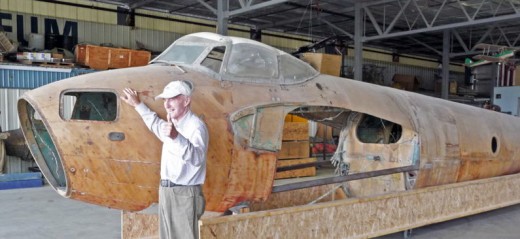
The Calgary Mosquito Aircraft Preservation Society (CMS) has surpassed its fund-raising goal of $800,000 with time to spare and that means a well preserved Mosquito and Hawker Hurricane will be restored to museum quality.
Both aircraft have been the target of various restoration projects and are now owned by the City of Calgary. After a tense period in which the city considered trading away the Mosquito, a well-organized campaign by the preservation society caused a change of heart and a challenge was issued to the group.
The city turned the restoration of both aircraft over to the society in 2012 and gave the group until August of 2014 to raise $800,000 in cash, labour and donations in kind toward the restoration. Once that funding was raised, as it was on June 20, the city agreed to match the total raised by the volunteers.
“We can now proceed unhindered with the restoration…,” the society said in a news release.
The aircraft were in storage, most of the time inside, for 50 years before CMS took responsibility for them. The Mosquito is at the Bomber Command Museum of Canada in Nanton where society volunteers will complete the restoration. The Hurricane’s restoration has been subcontracted to Historic Aviation Services of Wetaskiwin.
While most Mosquitos on display or under restoration commemorate their Second World War service, the Calgary Mosquito will pay homage to the second career of nine of the aircraft. The Mosquito was an aerial survey aircraft for Spartan Air Services (a sister ship to the Mosquito recently restored to flying condition by Victoria Air Services) and will be restored to reflect that role. Spartan mapped much of the North in the 1950s and 1960s using the Mosquitos.
The Hurricane, which was built by Canadian Car and Foundry for the RCAF, will be restored to its original designation as RCAF 5389. During the war, the Hurricane was based for a short time at Tofino on Vancouver Island to defend against a possible attack by Japan.
Webster Finalists Announced
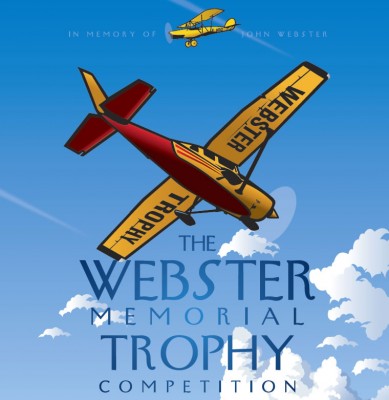 The Webster Memorial Trophy finalists for this year’s competition have been announced and will meet at Kitchener-Waterloo Airport in late August to determine Canada’s top amateur pilot.
The Webster Memorial Trophy finalists for this year’s competition have been announced and will meet at Kitchener-Waterloo Airport in late August to determine Canada’s top amateur pilot.
During the week, the pilots will do a series of written and practical tests aimed at determining who has the best combination of flight skills and knowledge to be considered the best private pilot in the country.
The finalists are:
Finalist Region Flight Training Unit
Matthew VanderPloeg British Columbia Pacific Flying Club
Corey Harke Alberta Cooking Lake Aviation Academy
Matthew Skwara Saskatchewan Regina Flying Club
Andrew Bryson Manitoba Harv’s Air
Alexander Hislop Western Ontario Sault College
Gregory Yandle Central Ontario Seneca College
Sebastien Leduc Eastern Ontario Seneca College
Ali Hoteit Quebec Cargair
Mark Nardei Atlantic Moncton Flight College
Airmen’s Remains Identified
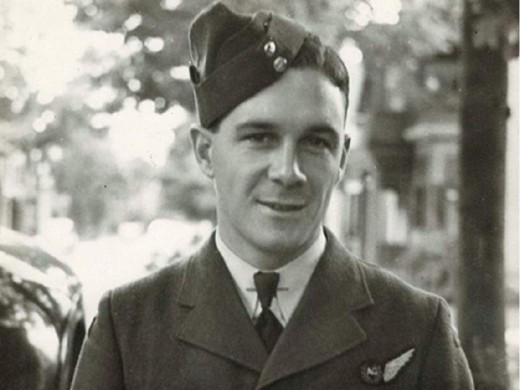
Almost 72 years after his Halifax bomber was shot down over Germany, a 22-year-old airman’s remains have been positively identified.
Flt. Sgt. John Joseph Carey, of Ottawa, was the front gunner on the Halifax when an enemy aircraft shot it down on Aug. 28, 1942. The bomber crashed in Laacher See, a lake south of Bonn.
In 2008, German explosives disposal divers were checking the wreck for unexploded ordinance when they discovered Carey’s remains. A blood relative was found for DNA matching and the remains were positively identified last December.
Carey will buried at the Rehenberg War Cemetery in Rheinberg, Germany with full military honours on July 9. Members of his family, the Canadian Armed Forces and government officials will attend.
Carey was stationed at RAF Station Elsham Wolds. His sacrifice had already been recognized. His name is on the roster at the Runnymede Memorial in Surrey, England, which is a memorial for airmen with no known grave.
